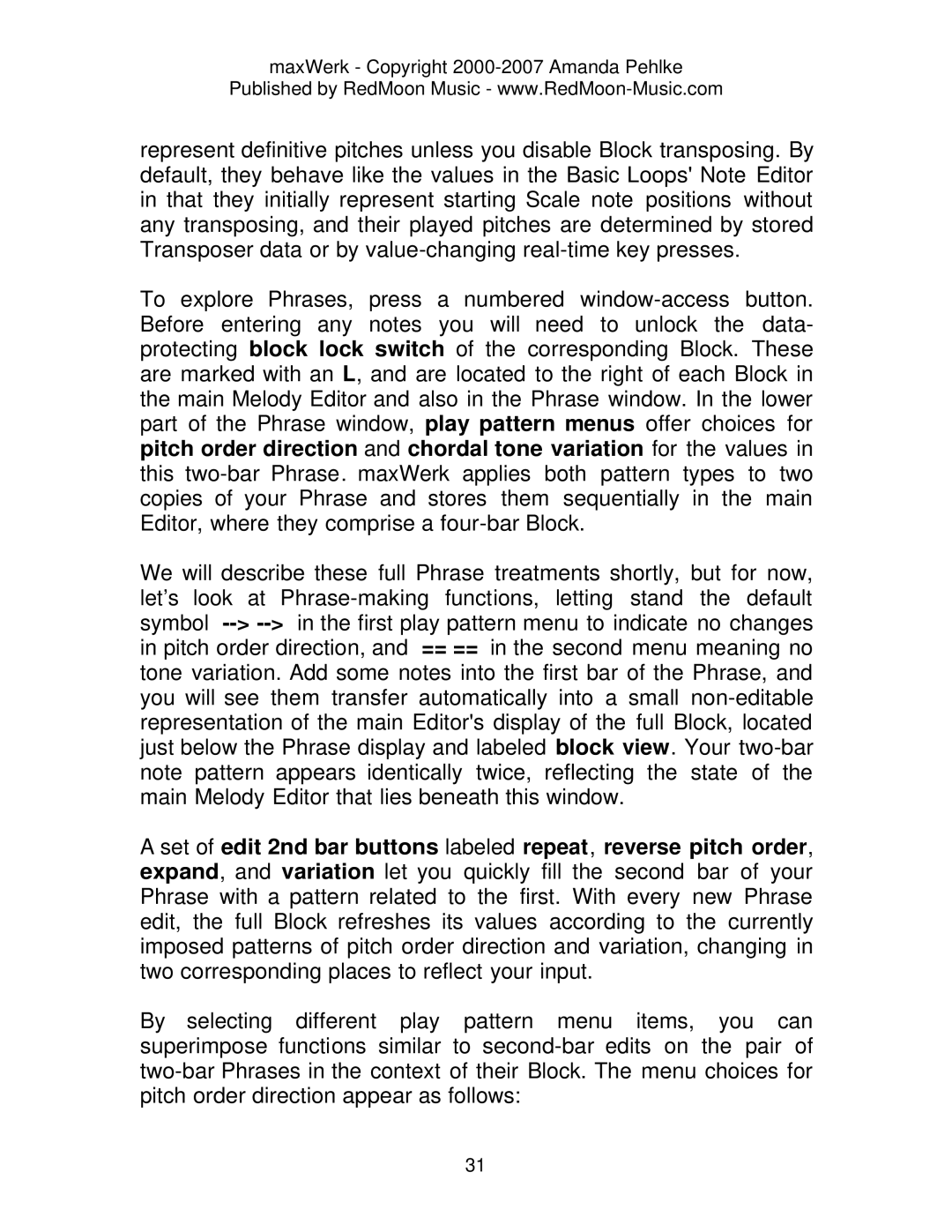maxWerk - Copyright 2000-2007 Amanda Pehlke
Published by RedMoon Music - www.RedMoon-Music.com
represent definitive pitches unless you disable Block transposing. By default, they behave like the values in the Basic Loops' Note Editor in that they initially represent starting Scale note positions without any transposing, and their played pitches are determined by stored Transposer data or by value-changing real-time key presses.
To explore Phrases, press a numbered window-access button. Before entering any notes you will need to unlock the data- protecting block lock switch of the corresponding Block. These are marked with an L, and are located to the right of each Block in the main Melody Editor and also in the Phrase window. In the lower part of the Phrase window, play pattern menus offer choices for pitch order direction and chordal tone variation for the values in this two-bar Phrase. maxWerk applies both pattern types to two copies of your Phrase and stores them sequentially in the main Editor, where they comprise a four-bar Block.
We will describe these full Phrase treatments shortly, but for now, let’s look at Phrase-making functions, letting stand the default symbol -->-->in the first play pattern menu to indicate no changes in pitch order direction, and == == in the second menu meaning no tone variation. Add some notes into the first bar of the Phrase, and you will see them transfer automatically into a small non-editable representation of the main Editor's display of the full Block, located just below the Phrase display and labeled block view. Your two-bar note pattern appears identically twice, reflecting the state of the main Melody Editor that lies beneath this window.
A set of edit 2nd bar buttons labeled repeat, reverse pitch order, expand, and variation let you quickly fill the second bar of your Phrase with a pattern related to the first. With every new Phrase edit, the full Block refreshes its values according to the currently imposed patterns of pitch order direction and variation, changing in two corresponding places to reflect your input.
By selecting different play pattern menu items, you can superimpose functions similar to second-bar edits on the pair of two-bar Phrases in the context of their Block. The menu choices for pitch order direction appear as follows:
